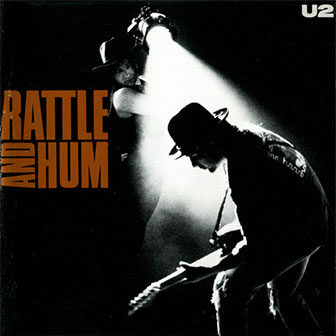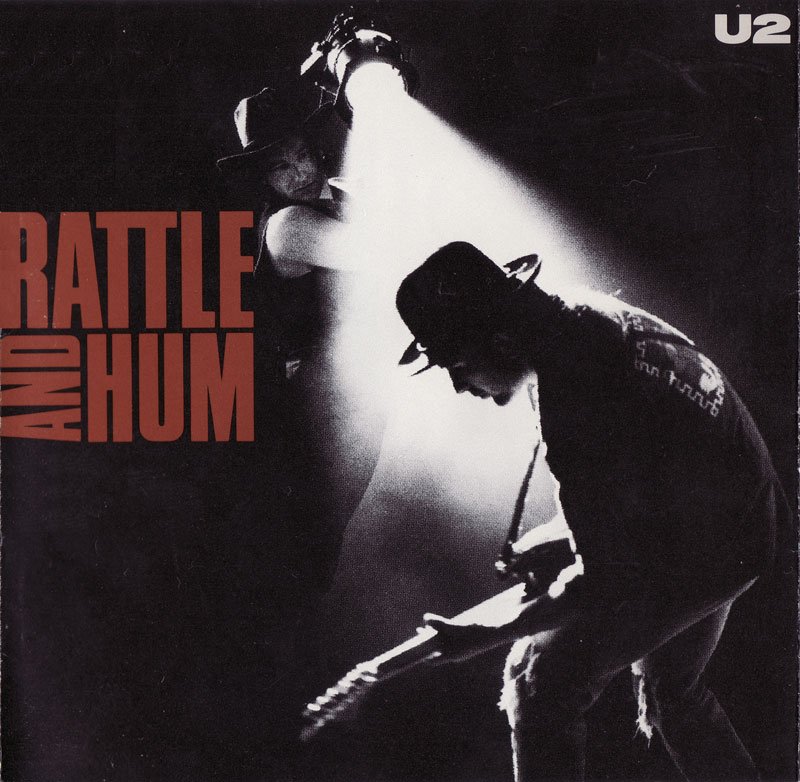
Critical reception to both the album and the film was mixed one Rolling Stone editor spoke of the album's "excitement", another described it as "misguided and bombastic". King, and Harlem's New Voices of Freedom gospel choir.Īlthough Rattle and Hum was intended to represent the band paying tribute to rock legends, some critics accused U2 of trying to place themselves amongst the ranks of these artists. A collection of new studio tracks, live performances, and cover songs, the project includes recordings at Sun Studio in Memphis and collaborations with Bob Dylan, B.B. Following the breakthrough success of the band's previous studio album, The Joshua Tree, the Rattle and Hum project captures their continued experiences with American roots music on the Joshua Tree Tour, further incorporating elements of blues rock, folk rock, and gospel music into their sound. The album was produced by Jimmy Iovine and was released on 10 October 1988, while the film was distributed by Paramount Pictures and was released on 27 October 1988. There’s the fervid, screaming despair of the anti-war “Sunday Bloody Sunday” (an unusual display of courage for a Dublin-based band) the hushed prayer of the Martin Luther King elegy “Pride (In the Name of Love).” And the scorching attack on contemporary American belligerence, “Bullet the Blue Sky,” which contains biblical imagery of locusts and plague, the “rattle and hum” of the film’s title.Rattle and Hum is a hybrid live/studio album by Irish rock band U2, and a companion rockumentary film directed by Phil Joanou. Yet, if Joanou muffles the context, the music comes through searingly clear.


(Though U2 is a notoriously humorless onstage group, Mullen supplies some bright backstage moments.) Blond-cropped drummer Larry Mullen Jr., the best camera subject, is sprightly and swift, an elfin jock. Bassist Adam Clayton looks like a street-gang’s bespectacled pet intellectual. Lead guitarist Dave (The Edge) Evans is a wry wisp spouting blues licks. Singer Bono (Hewson) seems dourly, fiercely charismatic. Joanou asks banal questions the band smirks. We see a bit of the quartet wandering around Dublin, Harlem, or Graceland-or engaging in a monumentally failed interview. Joanou already displayed his camera virtuosity in “Three O’Clock High.” But here, though he matches the impassioned sounds with spectacular visuals, he may not be setting enough of a context.

And even though the cinematographer is Jordan Cronenweth (“Blade Runner,” “Stop Making Sense”), it’s the monochrome, shot by director-editor Phil Joanou’s USC college collaborator Robert Brinkmann, that looks more right, more memorable. Midway through, the film finally switches to color: an explosion of bloody reds and harsh ebony. This black-and-white is right in the style of U2’s album photos or videos.
#BULLET THE BLUE SKY RATTLE AND HUM TORRENT#
We see the four musicians silhouetted against a river of fans, a human torrent twisting and swollen in the roaring canyons of the stadiums. Most of “Rattle and Hum” is shot in lyrical monochrome with vast, tilted panoramas. And the look and feel of the band-a mixed Catholic-Protestant bunch-suggests a bonded community of artists clinging to friendship and ideals in the midst of chaos and war. Lead singer Bono Hewson’s lyrics, with their cargo of fury and rapt longing, have a messianic fervor that embraces both Yeatsian poetry and black gospel music. They sing of the Irish “troubles,” of contemporary indifference, violence and greed. And it gives non-fans a chance to see why this unlikely band-four young former Dublin schoolmates, all in their mid-to-late 20s-are often ranked by critics as the world’s best.Īgainst music of shattering intensity and drive, they send out anthems of pacifism, interracial harmony, sweet love and romantic despair.

“Rattle and Hum” records some savagely compelling live performances from U2’s 1987 tour. It’s starker, purer-its best songs charged with outrage against injustice.
#BULLET THE BLUE SKY RATTLE AND HUM MOVIE#
But the Irish group U2, subject of the concert movie “U2 Rattle and Hum” (citywide), works a different vein. Rock ‘n’ roll, at its orgiastic best, was often party music exploding past its boundaries, pummeling shrieks of lust and dyonisian frenzy.


 0 kommentar(er)
0 kommentar(er)
